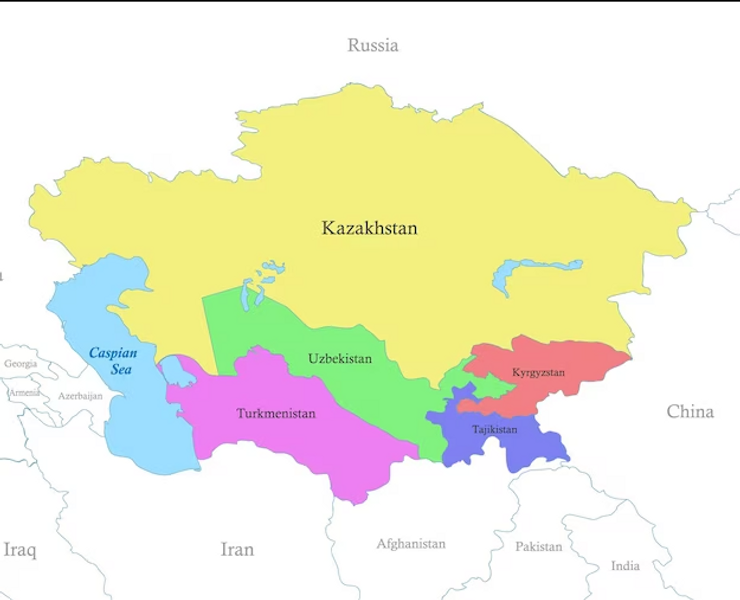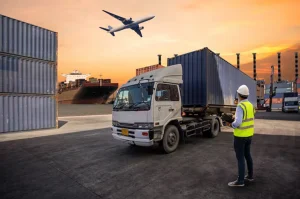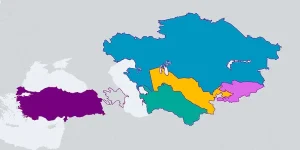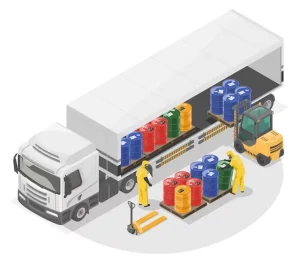Multimodal transportation through Georgia plays a crucial role in global trade, connecting distant regions and facilitating the movement of goods. For businesses in Central Asia looking to establish efficient transportation routes, Georgia emerges as a strategic hub due to its favorable geographical location and well-developed multimodal transportation infrastructure.
Nestled at the crossroads of Europe and Asia, Georgia serves as a natural bridge for trade flows between these two continents. Its strategic location offers a gateway for Central Asian countries, such as Kazakhstan, Uzbekistan, and Turkmenistan, to access international markets through various modes of transportation.
Multimodal Solutions
To optimize logistics, businesses in Central Asia can leverage multimodal transportation solutions. Integrating rail, road, and sea transport allows for flexibility and efficiency in moving goods.
Customs and Regulatory Considerations
While exploring multimodal transportation options through Georgia, it’s crucial to consider customs and regulatory requirements. Georgia has implemented reforms to streamline customs procedures, making cross-border movements more efficient. Businesses should stay informed about documentation, tariffs, and compliance regulations to ensure a smooth transit experience.
Routes for Multimodal Transportation
Multimodal transportation routes from Central Asia through Georgia offer businesses flexible and efficient options for moving goods across diverse regions. The selection of routes may vary based on specific cargo requirements, cost considerations, and time sensitivity. Here are some key routes for multimodal transportation from Central Asia through Georgia:
Trans-Caspian Route:
Rail: Central Asian countries, such as Kazakhstan and Turkmenistan, can utilize the Trans-Caspian Railway to transport goods to the Caspian Sea.
Sea: Goods are then transshipped onto vessels at Caspian Sea ports, continuing through the Caspian Sea to Azerbaijan.
Road/Rail: From Azerbaijan, goods can continue their journey by road or rail to Georgia, using the existing transportation infrastructure.
China-Central Asia-West Asia Corridor:
Rail: Utilizing the China-Europe rail corridors, goods can be transported from Central Asia (e.g., Kazakhstan) to China.
Sea: After reaching Chinese ports, sea transport can be employed to move goods to Georgian Black Sea ports (e.g., Poti or Batumi).
Road/Rail: From the Black Sea ports, road or rail transportation can be used to distribute goods to various destinations in Georgia or beyond.
TRACECA Corridor:
Road: Leveraging the TRACECA program, goods from Central Asia can be transported via the East-West Highway, establishing a road connection between Central Asia and Georgia.
Rail: Transshipment from road to rail can occur in Georgia, allowing goods to access the rail network for further transportation.
North-South Transport Corridor:
Road/Rail: The North-South Transport Corridor connects Central Asia to the Persian Gulf, passing through Iran. Goods can be transported via road and rail to the Persian Gulf.
Sea:From Persian Gulf ports, goods can be shipped to Georgian Black Sea ports using sea transport.
Road/Rail: After arriving in Georgia, the goods can continue their journey by road or rail to reach their final destinations.
Central Asia-Middle East Corridor:
Rail: Central Asian countries can use rail transport to connect to the Middle East.
Sea: Freight can be shifted to Middle Eastern ports and then transported via sea to reach ports in Georgia.
Road/Rail: Upon reaching Georgia, cargo can be disseminated to diverse destinations using either road or rail transportation.
Silk Road Route:
Road/Rail: Leveraging the historic Silk Road routes, goods can be transported from Central Asia through countries like Azerbaijan, Iran, and Turkey, reaching Georgia.
Sea: After reaching the Mediterranean Sea, goods can be further transported by sea to Georgian Black Sea ports.
Road/Rail: In Georgia, the goods can be distributed using road or rail transport networks.
These routes demonstrate the flexibility of multimodal transportation, allowing businesses in Central Asia to choose the most suitable combination of modes based on their specific needs and logistical considerations. The integrated use of rail, road, and sea transport facilitates efficient and cost-effective movement of goods, enabling businesses to access global markets through Georgia’s strategically positioned transportation infrastructure.
What should be taken into account?
When considering multimodal transportation from Central Asia through Georgia, several factors should be taken into account to optimize logistics efficiency, reduce costs, and enhance overall supply chain performance. Here are key considerations:
Geographical Location of Georgia:
Strategic Hub: Leverage Georgia’s strategic geographical location as a natural bridge between Europe and Asia. The country’s position facilitates efficient connectivity between Central Asia and international markets.
Integration of Different Modes:
Optimal Mode Selection: Choose the most suitable combination of transportation modes (rail, road, sea, and air) based on the nature of the cargo, time sensitivity, and cost.
Transit Infrastructure in Georgia:
Utilize Ports: Take advantage of Georgia’s Black Sea ports, such as Poti and Batumi, for sea transport. These ports are equipped with modern facilities and serve as crucial gateways for goods entering the South Caucasus region.
Road and Rail Networks: Optimize the use of Georgia’s well-developed road and rail networks, including the East-West Highway, to facilitate efficient movement of goods within the country and beyond.
Customs and Regulatory Considerations:
Compliance: Stay informed about customs regulations and compliance requirements in Georgia and the countries along the chosen routes. Efficient customs clearance is crucial for minimizing delays.
Documentation: Ensure accurate and timely documentation to facilitate smooth transitions at borders and ports.
Technology and Visibility:
Real-Time Tracking: Implement advanced tracking and monitoring systems to gain real-time visibility into the movement of goods. This enhances control over the supply chain and allows for proactive decision-making.
Cost Optimization:
Route Optimization: Evaluate and choose routes that offer the best balance between cost and efficiency. Consider factors such as fuel prices, tolls, and tariffs when planning the transportation routes.
Risk Management:
Redundancy Planning: Develop contingency plans and redundancy strategies to mitigate risks associated with disruptions in any single mode of transportation.
Insurance: Consider appropriate insurance coverage for goods during transit, taking into account the specific risks associated with each transportation mode.
Taking into account these factors, businesses can optimize their multimodal transportation routes from Central Asia through Georgia, ensuring a cost-effective, reliable, and environmentally sustainable supply chain. Continuous monitoring and adaptation to changing market conditions will further enhance the effectiveness of these strategies.
Toptrans: Your Multimodal Partner
Toptrans stands out by offering a comprehensive range of services, including land, sea, air, and rail transportation. Our customs and brokerage services add an extra layer of convenience for clients.
Toptrans Fleet
Diverse Fleet for Varied Cargo Types
Toptrans boasts a diverse fleet capable of handling various cargo types, including dangerous and military shipments. Our specialized approach ensures the safe transportation of goods.
Real-time Updates for Informed Clients
Keeping clients informed is a priority for Toptrans. Our well-functioning update system provides real-time information, fostering transparency and trust.
Preferred Choice Amid Geopolitical Developments
Toptrans has emerged as the preferred choice for partners seeking alternative transport solutions amid geopolitical developments. Our adaptability ensures uninterrupted logistics services.
Determining Service Fees
Factors Influencing Costs
The final service fee from Toptrans is determined based on individual cargo characteristics, the chosen route, type of transportation, and any additional services required. This transparent approach helps clients plan their logistics budget effectively.
Client-Centric Approach
Toptrans takes pride in its client-centric approach. Our team is readily available to answer queries, provide quotes promptly, and tailor solutions according to client requirements.
Toptrans, with our extensive experience, diverse services, and global reach, stands out as the ideal choice for businesses in Central Asia. Embrace the efficiency of multimodal transportation through Georgia and let Toptrans be your trusted logistics ally.








